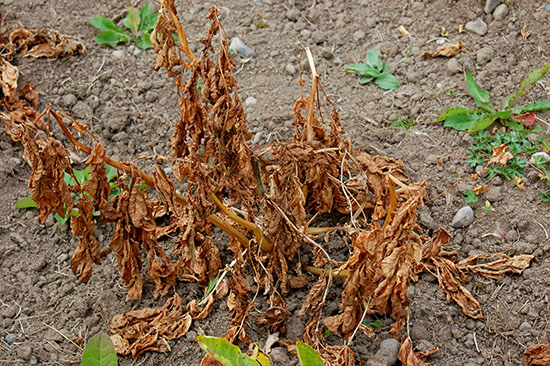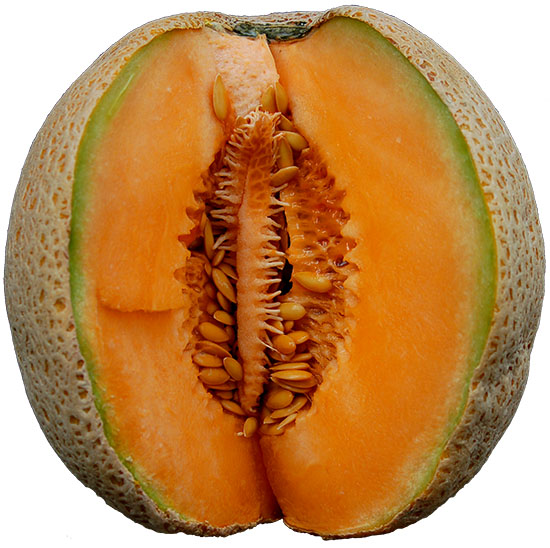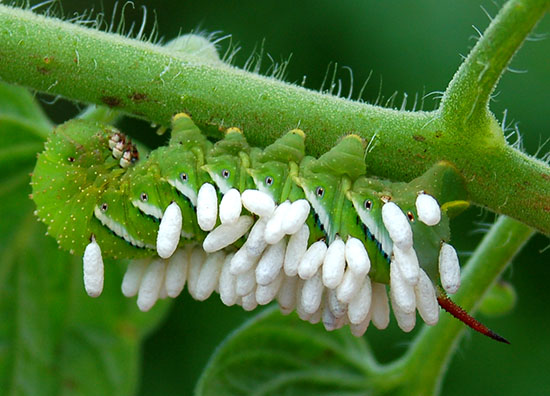It’s time to get started on the vegetable garden for the coming season so you can grow your own healthy, organic food again this year. Many of us have already started seedlings indoors to transplant out to the garden or the cold frames as soon as weather permits. Kathryn and I have come up with a checklist of ten things to consider before you plant. Each item on the list helps to prevent pests and diseases in your vegetable garden. All ten of them acting in concert really gives you a leg up for a successful and productive year.
 1. Sanitize. If you didn’t get around to cleaning up old left-over garden debris last autumn, do it now. Pay special attention to any dead plant material from diseased or infested plants and get it out of your garden. Fungal spores, insect eggs, and bacteria lurking on old infected dead leaves lying on the ground can quickly infect your new plants and ruin your produce all summer long.
1. Sanitize. If you didn’t get around to cleaning up old left-over garden debris last autumn, do it now. Pay special attention to any dead plant material from diseased or infested plants and get it out of your garden. Fungal spores, insect eggs, and bacteria lurking on old infected dead leaves lying on the ground can quickly infect your new plants and ruin your produce all summer long.
2. Right plant, right place. Be sure and read the instructions on the seed pack or the vegetable start plant label and put your plants in the best location to meet those requirements. If your plants have the right amount of light and water, the correct temperature, and the proper soil they won’t be under stress. And stress, as we all know, predisposes our plants (as well as ourselves) to attack by pests and diseases.
3. Light and air flow. Most vegetable and fruit plants want full sun and free air movement. Plants that do not get enough sunlight will be weak and spindly, and won’t be able to produce very much food for you. Free air movement helps foliage dry quickly and helps to avoid diseases and pests so don’t crowd your plants, give them space.
4. Genetic resistance. If you have a choice, choose cultivars that are genetically resistant to diseases and pests. Less disease and fewer pests means less work for you and more produce. Sounds like a win-win to me! Most all of these disease resistant cultivars have been developed through traditional plant breeding techniques.
5. Manage water. Set up your garden so that your watering practices deliver water to the root system, not to the leaves. Keeping the leaves dry goes a long way to avoiding diseases. In general, keep your plants evenly moist for best results. Allowing your plants to get extremely dry and then flooding them to get them extremely wet results in uneven growth, deformed foliage, and reduced yields. Also try to group plants according to their watering needs.
 6. Proper temperature. Some vegetables like tomatoes and sweet corn, and fruits like melons are warm season crops. These are plants that flourish in hot humid weather. Other plants like cabbage, lettuce, and spinach are cool season plants that flourish in cool temperatures. If you put warm season plants in the ground in early spring while soil and air temperatures are still quite cool, they will not grow well and may be stunted. Conversely, cool season plants planted in mid-summer may simply flower and set seed while still very tiny.
6. Proper temperature. Some vegetables like tomatoes and sweet corn, and fruits like melons are warm season crops. These are plants that flourish in hot humid weather. Other plants like cabbage, lettuce, and spinach are cool season plants that flourish in cool temperatures. If you put warm season plants in the ground in early spring while soil and air temperatures are still quite cool, they will not grow well and may be stunted. Conversely, cool season plants planted in mid-summer may simply flower and set seed while still very tiny.
7. Build soil. Creating healthy, biologically active soil is the best way to build healthy plants. Incorporating dead plant material (not diseased!) into the soil feeds micro-organisms that break it down into simple nutrients that will ultimately feed your plants. Feeding the soil results in a complex ecosystem filled with fungi, bacteria, insects, worms, and other critters that help to out-compete the ones that want to damage your plants. Compost and organic fertilizers incorporated into the soil are excellent sources of dead plant material with which to feed your soil. Mulch placed on top of the soil around your plants will also eventually break down and feed the soil.
8. Polycultures. A polyculture is where you put lots of different plants into the same location. Corn, beans, and squash, for example, is a traditional polyculture developed by the Pueblo Indians of the Southwest centuries ago. The corn, beans, and squash are all planted together in the same bed. You can mix vegetables and fruits into your flower beds and vice versa. The important benefit you get is that it makes your plants harder for pestiferous insects to find. It also makes it difficult for fungal and bacterial disease to jump from plant to plant.
9. Rotation. Don’t put a plant in the same location where you grew it last year. Move your plants around from year to year to make them moving targets. It helps to avoid the build-up of soil-borne pests and diseases. There are lots of crop rotation systems and schemes, you can choose one of these or just create your own system, one that works for you. Many people find that a three-year rotation system works well.
10. Beneficial organisms. There are lots and lots of insects and other critters that are willing and able to eat the insect pests that want to eat your produce before you do. Many are predators, like lady bugs and lacewings, and some are parasites that lay their eggs inside other insects. And then there are beneficial nematodes that attack and kill insects that live in the soil. Many birds are also insectivorous and can help to get rid of insect pests for you, and so can frogs, toads, and spiders. If you manage your garden to protect these beneficial critters, they will help you manage the pests.



I don’t know whether it’s just me or if everyone else experiencing problems
with your website. It appears like some of the written text on your posts are
running off the screen. Can someone else please provide feedback and let me know if
this is happening to them too? This may be a problem
with my internet browser because I’ve had this happen before. Appreciate it
Gday! I hope you don’t mind but I decided to submit your weblog: http://ddandkw.com/how-to/a-vegetable-garden-checklist/ to my online directory. I used, “A Vegetable Garden Checklist | Deardorff & Wadsworth” as your site title. I hope this is fine with you. If perhaps you’d like me to change the title or remove it completely, contact me at lilia_prater@bigstring.
com. Thanks for your time.